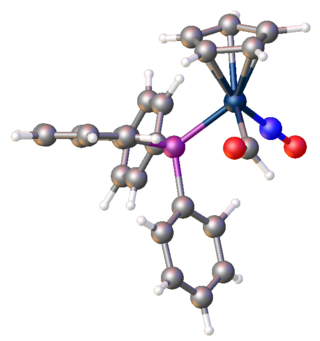Top Qs
Timeline
Chat
Perspective
Transition metal formyl complex
From Wikipedia, the free encyclopedia
Remove ads
In organometallic chemistry, a transition metal formyl complex is a metal complex containing one (usually) or more formyl (CHO) ligand. A subset of transition metal acyl complexes, formyl complexes can be viewed as metalla-aldehydes. A representative example is (CO)5ReCHO. The formyl is viewed as an X (pseudohalide) ligand. Metal formyls are proposed as intermediates in the hydrogenation of carbon monoxide, as occurs in the Fischer-Tropsch process.[2]

Remove ads
Structure and bonding
The MCHO group is planar. A C=O double bond is indicated by X-ray crystallography. A second resonance structure has a M=C double bond, with negative charge on oxygen.
Synthesis and reactions
Metal formyl complexes are often prepared by the reaction of metal carbonyls with hydride reagents:[3]
- [Re(CO)6]+ + H− → (CO)5ReCHO
The CO ligand is the electrophile and the hydride (provided typically from a borohydride) is the nucleophile.
Some metal formyls are produced by reaction of metal carbonyl anions with reagents that donate the equivalent of a formyl cation, such a mixed formate anhydrides.[4]
Metal formyls participate in many reactions, many of which are motivated by interest in Fischer-Tropsch chemistry. O-alkylation gives carbenoid complexes. The formyl ligand also functions as a base, allowing the formation of M-CH=O-M' linkages.[5] Decarbonylation leads to de-insertion of the carbonyl, yielding hydride complexes.[2]
Remove ads
References
Wikiwand - on
Seamless Wikipedia browsing. On steroids.
Remove ads
